Navy tests ocean drones off US coast
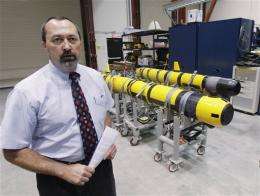
Just beneath the placid, sailboat-dotted surface of Narragansett Bay, torpedo-shaped vehicles spin and pivot to their own rhythm, carrying out missions programmed by their U.S. Navy masters.
The bay known as a playground for the rich is the testing ground for the Naval Undersea Warfare Center in Newport, where the Navy is working toward its goal of achieving a squadron of self-driven, undersea vehicles.
One of the gadgets recently navigated its own way from Woods Hole, Massachusetts, to Newport, completing several preset tasks in what the military calls an unprecedented feat.
Technology under consideration by the military is often tested aboard cylinder-shaped vehicles with a diameter of about 20 inches (50 centimeters). But the center also tests its own prototypes, including one dubbed Razor, which can propel itself by using flippers, like a turtle, for stealth.
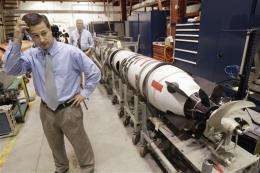
The Navy hopes its drones will eventually pilot themselves across oceans. The vehicles are already used to detect mines and map the ocean floor and, with tweaks over the next several years, the military says they will be applied more to intelligence gathering and, in the more distant future, anti-submarine warfare.
"We do see these autonomous undersea vehicles as game changers," said Christopher Egan, a program manager at NUWC.
Compared with aerial drones, the undersea vehicles can be challenging to control from a distance. The water distorts the transmission of signals, and the drones have to contend with boat traffic, swirling currents and obstacles on the ocean floor.
They are typically powered by batteries, but their endurance has been sharply limited by the lack of a stronger power source that will allow for safe handling by sailors who deploy and collect the devices aboard submarines.
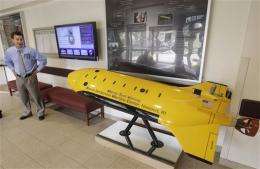
With advances in alternative energy sources, particularly fuel cells, the Navy says it is close to achieving a fully independent drone. By 2017, the Navy aims to have a large, unmanned vehicle that can stay out for 70 days. Within the next decade, it wants to field its first full squadron.
"We've seen the advances of unmanned aerial vehicles and what that provides to the war fighter," said Navy Capt. Brian Howes, who is involved in planning for the vehicles as commander of Submarine Development Squadron 5 in Washington state. "We're pushing the technology to have the same leap for our unmanned undersea vehicles."
In a time of tight federal budgets, the Navy also sees drones as a cost-effective way to extend the reach of its submarine fleet, which has been gradually shrinking in size since the end of the Cold War.
Norman Friedman, a New York-based naval analyst, said the unmanned undersea vehicles — or UUVs — are a necessary investment. Whether they deliver on their promise, he said, will depend on success at finding the right power plant.
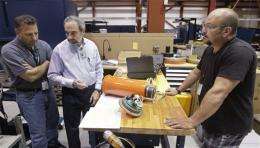
"The big obstacle is going to be energy," he said. "I don't get the feeling anyone has jumped up and said this is not a problem anymore."
The bay is the perfect testing environment, with shallow water, varied features on the bottom and commercial traffic, Egan said. At times, however, the engineers have to contend with interference from pleasure boaters, including one man who was approached by a Navy vessel after trying to grab a vehicle near the surface.
"We've had occasional interactions where a boat operator sees an opportunity to maybe snap up a cool device," Egan said. "We've had to deter them on occasion."
The Navy has used unmanned vehicles to simulate enemy submarines for training purposes since the 1970s, but officials say they have made dramatic leaps in autonomy.
The vehicle that completed the 26-hour voyage from Cape Cod to Newport in October 2010, for example, plotted its own course without relying on GPS positioning or other communications, Egan said. Guiding itself by features on the sea floor, it passed through the pylons of a bridge, circumnavigated the island of Jamestown and surfaced in a pre-determined spot inside the harbor.
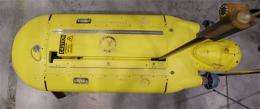
The laboratory at the Naval Undersea Warfare Center, which has 65 engineers and scientists dedicated to UUVs, works closely with private companies, academic institutions and other government agencies involved in similar research. The gadgets have a wide range of applications beyond the military, as demonstrated last year by vehicles that recovered the flight data recorder from an Air France plane that crashed in the mid-Atlantic.
The submarine community is particularly eager to see what the vehicles can do. Electric Boat in Groton, Connecticut, has designed a module to help future attack subs deploy and recover the drones, transporting them through the payload tubes.
"If you can do reconnaissance with multiple UUVs or one UUV, then in effect you extend the area the submarine touches," Friedman said.
Copyright 2012 The Associated Press. All rights reserved. This material may not be published, broadcast, rewritten or redistributed.



















